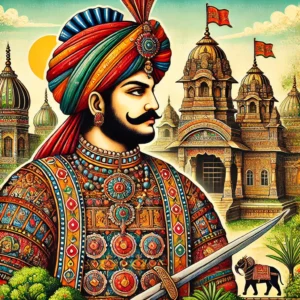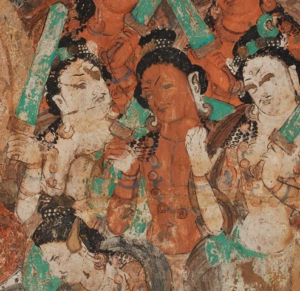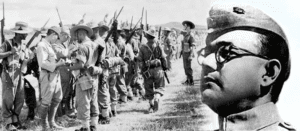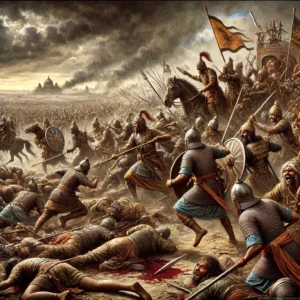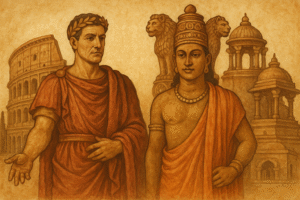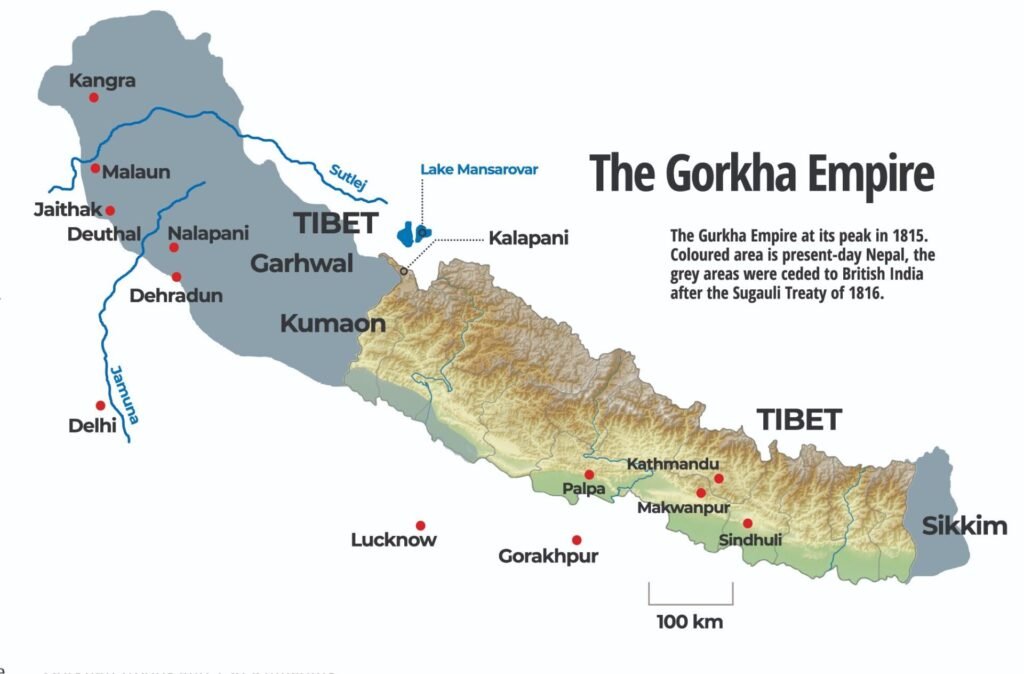
The early 19th century saw the expansion of the Gorkha Empire into parts of northern India, specifically the regions now known as Himachal Pradesh and Uttarakhand. Although the Gorkha rule is often remembered for its military conquests and strict administration, it also brought significant cultural, religious, and administrative contributions to these regions. This article explores the full spectrum of the Gorkha influence, from their military campaigns to their lasting cultural legacy.
1. The Rise and Expansion of the Gorkha Empire
The Gorkha Empire, originally a small kingdom in present-day Nepal, began its expansion under the leadership of Prithvi Narayan Shah in the mid-18th century. His successors continued these expansionist policies, pushing the boundaries of the empire westward into the Indian subcontinent.
- Conquest of Kumaon and Garhwal (1790-1803):
The Gorkha Empire first targeted the Kumaon region of Uttarakhand, which they conquered in 1790 after defeating the kingdom ruled by King Mahendra Chand. Following this, the Gorkhas moved into the neighboring Garhwal region, defeating King Pradyuman Shah in the Battle of Khurbura in 1803. The victory brought Garhwal under Gorkha control, marking the beginning of their rule in the region.
2. Expansion into Himachal Pradesh (1803-1815)
After consolidating their power in Uttarakhand, the Gorkhas, under the command of Amar Singh Thapa, moved into the hill states of Himachal Pradesh. This period saw the annexation of several princely states in the region.
Key Military Leaders:
- Amar Singh Thapa: As the commander-in-chief of the Gorkha forces on the western front, Amar Singh Thapa played a crucial role in expanding Gorkha control over Himachal Pradesh. He was a revered military leader and devout Hindu, known for both his strategic acumen and religious devotion.
- Bhakti Thapa: Another prominent figure was Bhakti Thapa, a veteran general who contributed significantly to the Gorkha campaigns and later resisted British forces during the Anglo-Gorkha War
Territories Conquered:
The Gorkhas annexed several important regions, including:
- Sirmour: Capturing Nahan, the capital, and establishing Gorkha rule.
- Bilaspur (Kahlur): Brought under Gorkha control, with the region becoming an important military outpost.
- Shimla Hills: Including states like Bushahr, Keonthal, and Jubbal, these areas fell to the Gorkhas, who fortified their positions.
- Kangra: Although initially resisting, Kangra was eventually taken by the Gorkhas in 1809, though they faced significant challenges from local uprisings and the Sikh Empire.
3. Administrative and Military Reforms
The Gorkha administration, while often harsh, introduced several reforms that had lasting impacts on the regions they governed.
- Efficient Revenue Collection:
The Gorkhas established a more systematic approach to revenue collection, stabilizing the local economy despite imposing heavy taxes. The revenue was often used to fund infrastructure projects, including the construction of roads and forts, contributing to regional development. - Military Organization and Fortification:
The Gorkhas were known for their strong military organization. They fortified key positions, including the Kangra and Jaithak forts, and introduced disciplined military practices. These practices influenced local martial traditions and contributed to the development of a strong defense infrastructure that persisted even after their rule ended.
4. Cultural Contributions and the Spread of Hinduism
Beyond their military and administrative actions, the Gorkhas made significant cultural and religious contributions to the regions under their control, particularly in promoting Hinduism.
- Promotion of Hinduism:
The Gorkhas, being devout Hindus, actively promoted the religion in Himachal Pradesh and Uttarakhand. They supported the construction and restoration of temples, ensuring that these religious sites remained central to the local communities. Amar Singh Thapa, in particular, was known for his pilgrimages to sacred sites such as Kedarnath and Badrinath, reinforcing the region’s Hindu identity. - Temple Construction and Restoration:
The Gorkhas undertook the repair and maintenance of several temples that had fallen into disrepair, helping to preserve important Hindu religious sites. Their efforts ensured that these temples continued to serve as centers of worship and pilgrimage, integrating Gorkha religious practices with local traditions. - Cultural Integration:
The Gorkhas brought their own customs, traditions, and languages to the regions, enriching the local cultural landscape. Festivals, music, and dance forms from Nepal were introduced, blending with the local culture to create a more diverse and vibrant society.
5. The Anglo-Gorkha War and the End of Gorkha Rule
The Gorkha Empire’s expansion brought them into conflict with the British East India Company, leading to the Anglo-Gorkha War of 1814-1816. This conflict marked the beginning of the end for Gorkha rule in Himachal Pradesh and Uttarakhand.
Key Battles:
- Battle of Nalapani (1814): The war began with the British attacking the Gorkha fort at Nalapani near Dehradun. Despite a fierce defense by Gorkha commander Balbhadra Kunwar, the British captured the fort after a prolonged siege.
- Siege of Jaithak: In Himachal Pradesh, the British faced stiff resistance at Jaithak Fort, commanded by Ranajor Singh Thapa. The Gorkhas eventually abandoned the fort after heavy losses on both sides.
- Treaty of Sugauli (1815-1816):
The war ended with the signing of the Treaty of Sugauli, which forced the Gorkhas to cede large parts of their empire to the British, including Kumaon, Garhwal, and most of the hill states in Himachal Pradesh. The British then established direct control over these regions, restoring some local rulers under British suzerainty.
6. The Legacy of Gorkha Rule
Although their rule was relatively brief, the Gorkhas left a lasting legacy in Himachal Pradesh and Uttarakhand.
- Social and Cultural Legacy:
The Gorkhas’ influence on local culture and religion is still evident today. The communities they established continue to thrive, contributing to the region’s cultural diversity. Gorkha festivals, traditions, and architectural styles have become integrated into the local cultural fabric. - Military and Administrative Impact:
The military practices introduced by the Gorkhas influenced local martial traditions, and their administrative reforms laid the groundwork for more organized governance structures. The Gorkhas’ reputation as disciplined warriors also paved the way for their recruitment into the British Indian Army, a tradition that continues today.
Conclusion
The Gorkha Empire’s rule over parts of Himachal Pradesh and Uttarakhand was marked by both challenges and contributions. While their military conquests and strict administration brought hardships, their promotion of Hinduism, cultural integration, and military organization left a lasting positive impact on the region. The legacy of Gorkha rule is complex, reflecting both the resilience of the local populations and the enduring influence of the Gorkhas on the cultural and social landscape of northern India.

